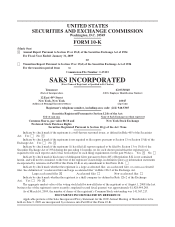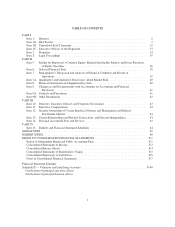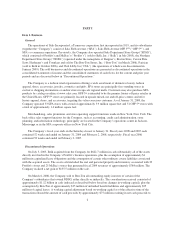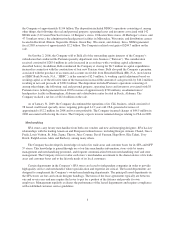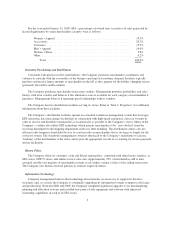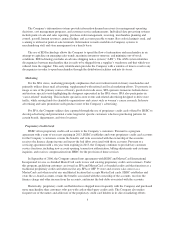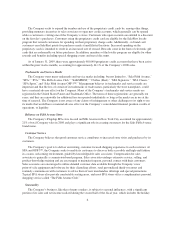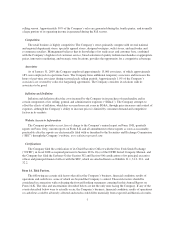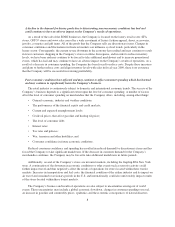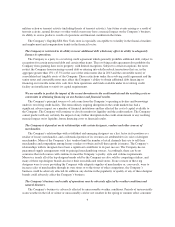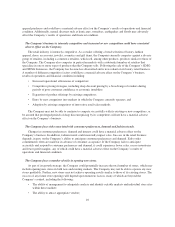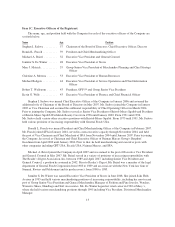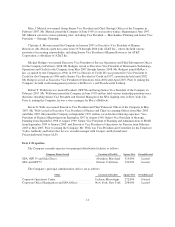Saks Fifth Avenue 2008 Annual Report Download - page 6
Download and view the complete annual report
Please find page 6 of the 2008 Saks Fifth Avenue annual report below. You can navigate through the pages in the report by either clicking on the pages listed below, or by using the keyword search tool below to find specific information within the annual report.The Company’s information systems provide information deemed necessary for management operating
decisions, cost management programs, and customer service enhancements. Individual data processing systems
include point-of-sale and sales reporting, purchase order management, receiving, merchandise planning and
control, payroll, human resources, general ledger, and accounts payable systems. Bar code ticketing is used, and
scanning is utilized at point-of-sale terminals. Information is made available on Company systems to
merchandising staff and store management on a timely basis.
The use of EDI technology allows the Company to speed the flow of information and merchandise in an
attempt to capitalize on emerging sales trends, maximize inventory turnover, and minimize out-of-stock
conditions. EDI technology includes an advance shipping notice system (“ASN”). The ASN system identifies
discrepancies between merchandise that is ready to be shipped from a supplier’s warehouse and that which was
ordered from the supplier. This early identification provides the Company with a window of time to resolve any
discrepancies in order to speed merchandise through the distribution facilities and into its stores.
Marketing
For the SFA stores, marketing principally emphasizes the latest fashion trends in luxury merchandise and
primarily utilizes direct mail advertising, supplemented with national and local marketing efforts. To promote its
image as one of the primary sources of luxury goods in its trade areas, SFA sponsors numerous fashion shows
and in-store special events highlighting the designers represented in the SFA stores. SFA also participates in
“cause-related” marketing. This includes special in-store events and related advertising designed to drive store
traffic, while raising funds for charitable organizations and causes such as women’s cancer research. In-house
advertising and sales promotion staffs produce most of the Company’s advertising.
For SFA, the Company utilizes data captured through the use of proprietary credit cards offered by HSBC to
develop advertising and promotional events targeted at specific customers who have purchasing patterns for
certain brands, departments, and store locations.
Proprietary Credit Cards
HSBC offers proprietary credit card accounts to the Company’s customers. Pursuant to a program
agreement with a term of ten years expiring in 2013, HSBC establishes and owns proprietary credit card accounts
for the Company’s customers, retains the benefits and risks associated with the ownership of the accounts,
receives the finance charge income and incurs the bad debts associated with those accounts. Pursuant to a
servicing agreement with a ten-year term expiring in 2013, the Company continues to provide key customer
service functions, including new account opening, transaction authorization, billing adjustments and customer
inquiries, and receives compensation from HSBC for the provision of these services.
In September of 2006, the Company entered into agreements with HSBC and MasterCard International
Incorporated to issue co-branded MasterCard cards to new and existing proprietary credit card customers. Under
this program, qualifying customers are issued an SFA and MasterCard co-branded credit card that functions as a
traditional proprietary credit card when used at any SFA or OFF 5th store and at www.saks.com or as a
MasterCard card when used at any unaffiliated location that accepts MasterCard cards. HSBC establishes and
owns the co-brand accounts, retains the benefits associated with the ownership of the accounts, receives the
finance charge and other income from the accounts, and incurs the bad-debts associated with the accounts.
Historically, proprietary credit card holders have shopped more frequently with the Company and purchased
more merchandise than customers who pay with cash or third-party credit cards. The Company also makes
frequent use of the names and addresses of the proprietary credit card holders in its direct marketing efforts.
5

